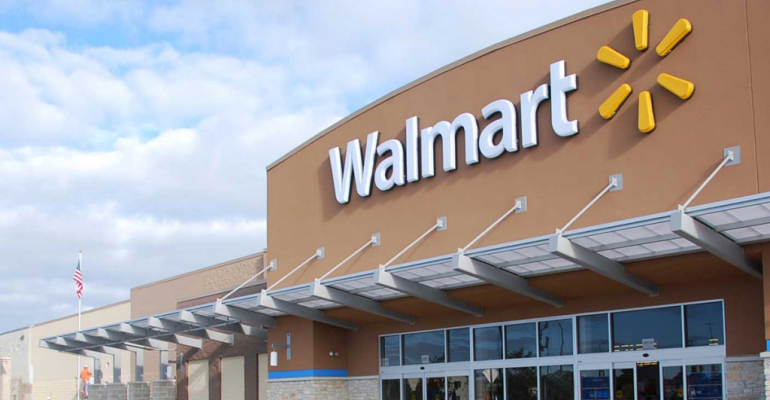Recognized as one of the retail food industry’s preeminent advisors, Supermarket News contributor Bill Bishop has been involved in research and consulting for several decades with a concentration on the new issues, competitors and developments impacting this business.
In 2011, Bill co-founded and became the Chief Architect at Brick Meets Click, an analytics and strategic insight firm that leverages its industry expertise, clear thinking and practical solutions to help clients solve the challenge of finding new routes to success in the changing U.S. grocery market.

Thinking you know what to expect from the competition can get you in trouble, especially when things are changing fast, and that is exactly what is happening at Walmart.
“It’s time for us to accelerate… . . . our investment in micro-fulfillment centers,” Walmart CFO told analysts earlier this year – and that’s on top of last year’s in-store and online investments in building out a seamless omnichannel shopping experience.
Well-focused capital investments have helped Walmart attract more customers with higher incomes, as it works to become the “primary destination” for more shoppers. However, it will continue to face two challenges as it moves further into omnichannel retailing:
• Maintaining the balance between food and general merchandise sales.
• Protecting the profitability of its store base.
These challenges create near-term vulnerabilities for the giant retailer. How Walmart responds will have a lot to do with how it neutralizes these vulnerabilities and sets the stage for future success.
What’s driving Walmart’s current success?
In mid-May, Walmart reported exceeding Q1 earnings, and its leadership has a clear idea of where they want to take the business. Over the last several years, they have:
• reduced spending on new stores and emphasized remodels;
• upped spending on digital infrastructure;
• re-tooled in-store communications; and
• developed a new loyalty program (Walmart +) that makes it easier for shoppers to access their omnichannel capabilities.
Plus, they are continuously evolving their digital infrastructure, shifting from in-store pickup to curbside, and now to expanded delivery that will include testing smart, temperature-controlled lockers and autonomous vehicles.
Walmart’s also working hard to upgrade the productivity and service delivered by their retail associates. Their recently announced “all in one” employee app is one thing they’ve done that should have a big impact on morale.
Meanwhile, Walmart continues to successfully emphasize low prices on advertised brands and offer ways to make shopping easier. Walmart’s moves into healthcare, financial services and advertising make it clear that the retailer wants to evolve from a mass merchandiser of grocery and general merchandise to a huge retailer of fast-moving customer goods and services whose closest direct competitor is Amazon.
What do they have to do now?
The ability to strike the right balance in the sales of food and general merchandise has made Walmart the retailer that it is today.
As a result, it created a virtual growth cycle in which sales of higher margin G.M. products made it possible to sell food at lower margins and the strong food sales helped to drive greater general merchandise sales.
This powerful “one-two punch” has enabled Walmart to become the nation’s largest discounter while also capturing the dominant share in grocery. Moving forward, it faces two tough challenges to keep the momentum going. The first is certainly tough, and the second will be even harder:
• Maintain this sales balance while competing with Amazon and not losing share to fast-growing hard discounters like Aldi, Save-A-Lot and Lidl.
• Achieve its overall return on investment by not allowing the online sales shift to reduce the profitability of its stores by negatively impacting sales per square foot and inventory turns. This will require the continuous rationalization of its store base. This won’ t be easy, since the company’s success up to this point has been heavily dependent on the success of its stores.
What to watch
To overcome these challenges, Walmart has to up its game in two in two areas.
First, implement a digital merchandising strategy that complements its in-store merchandising in order to generate a balanced sales mix. Some of this will be driven by pricing, but it will also require adjusting the online and in-store assortments offered to customers.
Second, steadily reduce investment in its store base in order to reduce the negative impact of sales shifting online. Since it has shown little appetite for reducing the size of its supercenters, this will require continuing focus on culling out stores that can be closed without giving up too many sales to the competition.
Expect initiatives and innovation in these two areas and do yourself a favor, start exposing yourself to Walmart in 2021. Get into a Walmart store, sign up for emails/texts, download their app, place an order — and most importantly, talk to friends and/or family who shop from Walmart in store, online or likely both.





